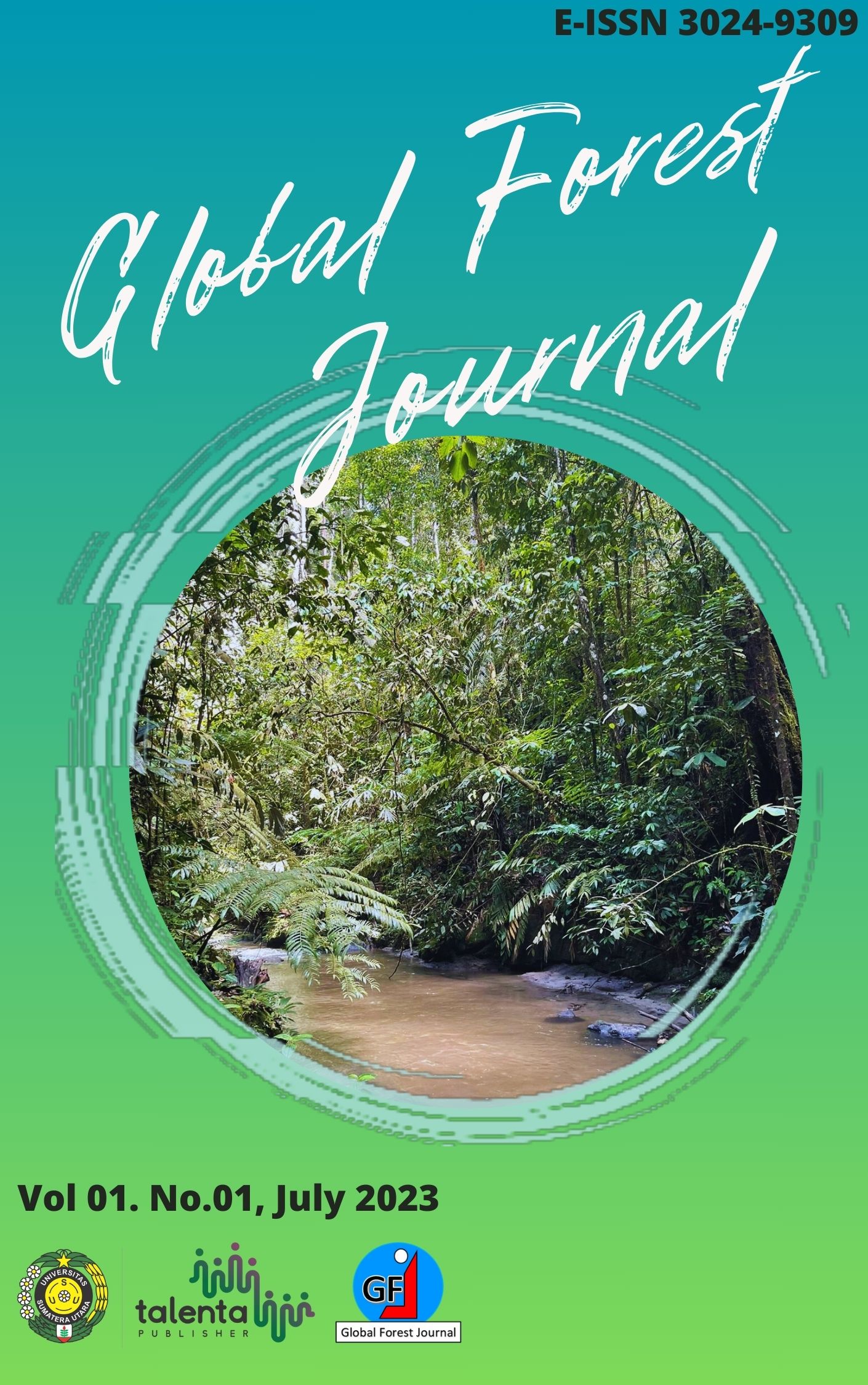Analysis of tree quality on the green line using google earth in Tanjung Morawa District, Deli Serdang Regency
DOI:
https://doi.org/10.32734/gfj.v1i01.13253Keywords:
Google Earth, Urban Forest, Tree Health, Tree Quality AssessmentAbstract
City development with unfriendly development causes the quality and quantity of open green space to decrease. Google Earth is an interactive mapping application released by google, which displays a digital visualization of the geographical shape of the earth. This study aims to determine the type and quality of trees on the urban forest in the Tanjung-Morawa sub-district and to map the quality of trees on the urban forest in the Tanjung-Morawa sub-district. This study uses a modified method of tree quality assessment with two criteria: tree health and technically criteria. From the observation result, there are 18 trees, Glodokan (Polyalthia longifolia) with the highest number, as many as 842 trees, and Dadap Merah (Erythrina crista goly) as the tree with the least amount. The quality of the trees in the urban forest shows a moderate good quality, where the highest health is in the medium category and for the technical in the low category. Trees that are recommended to be cut have a cumulative ≥ 2,5 Angsana trees with a total of 129 trees, and the highest cumulative percentage is the Banyan tree at 66,67%. The Mango tree has the lowest rate at 8,70%. Google Earth can’t be used optimally because of the low-resolution image quality. Image capture data in google earth has not been updated; the unstable internet connection and the time of the retrieval and processing of field data are not the same as the time retrieval and processing.
Downloads
Downloads
Published
Issue
Section
License
Copyright (c) 2023 Global Forest Journal

This work is licensed under a Creative Commons Attribution-ShareAlike 4.0 International License.












